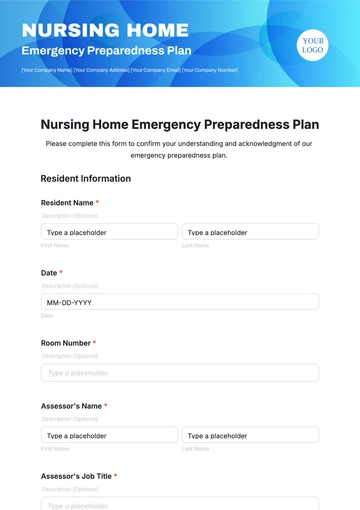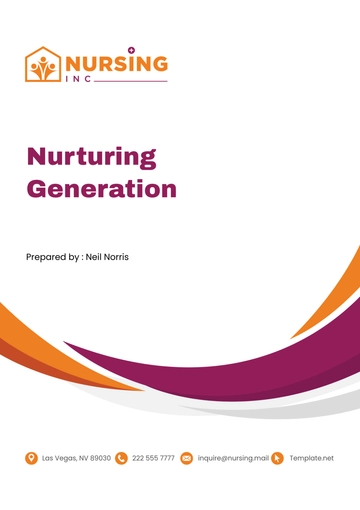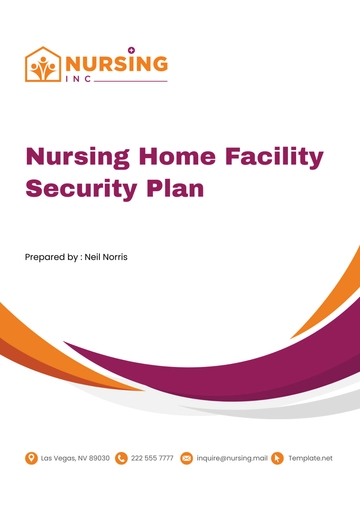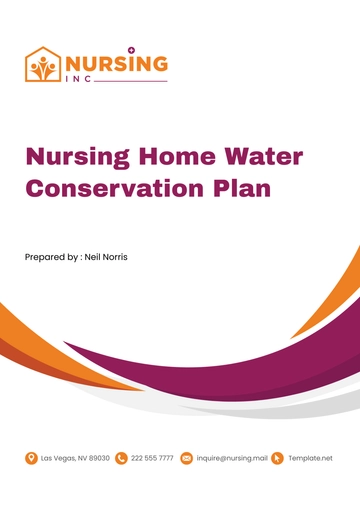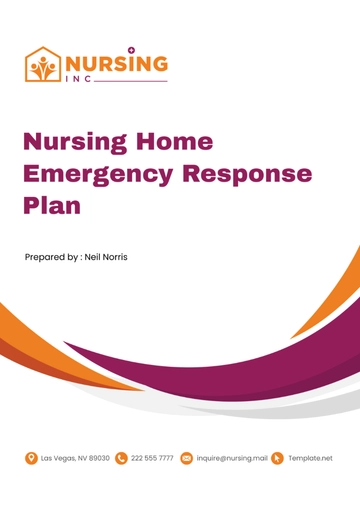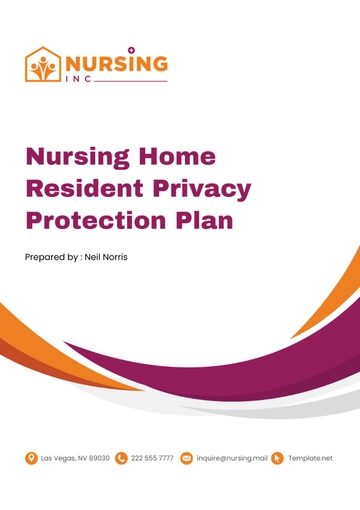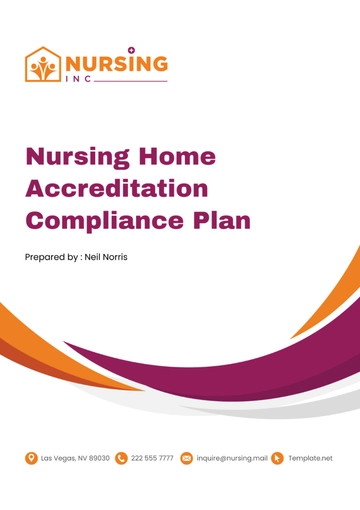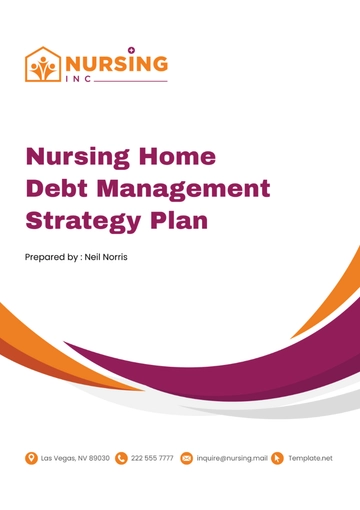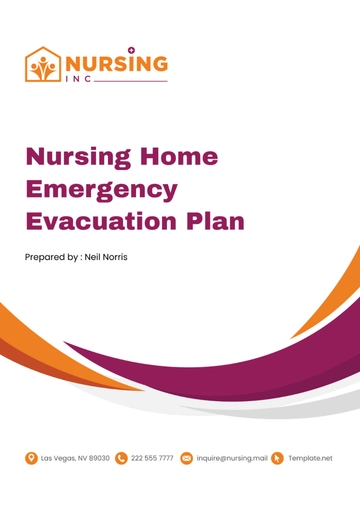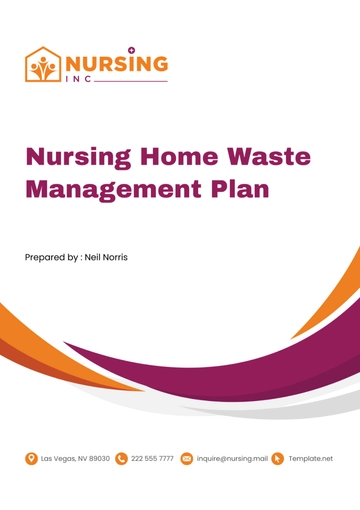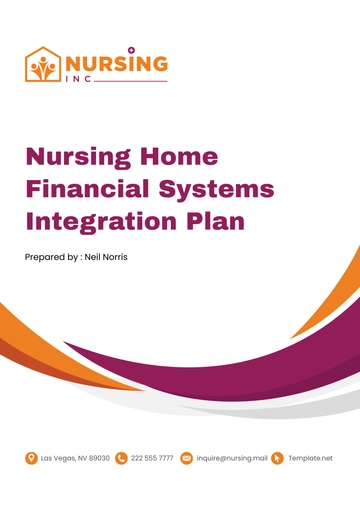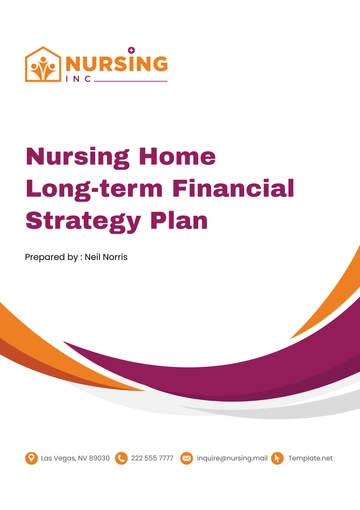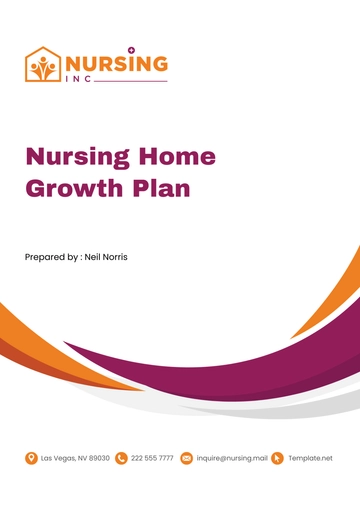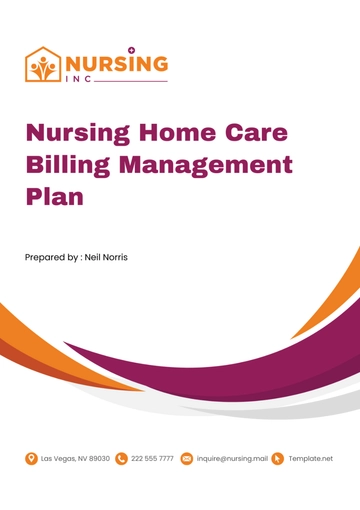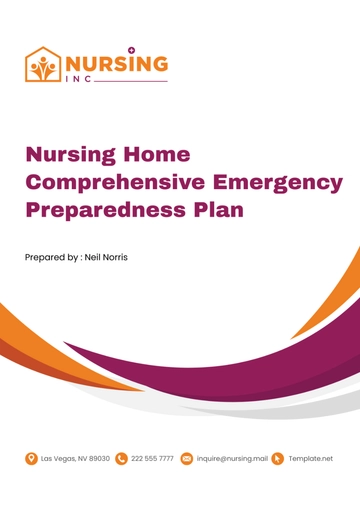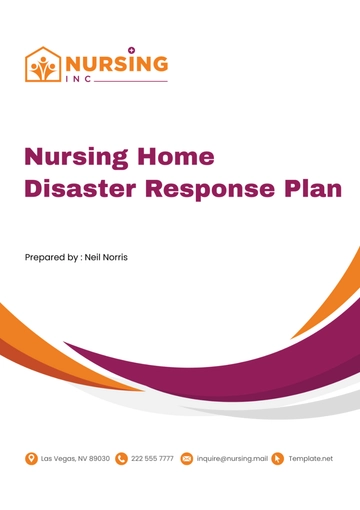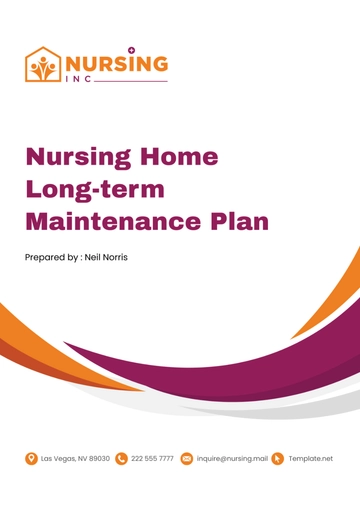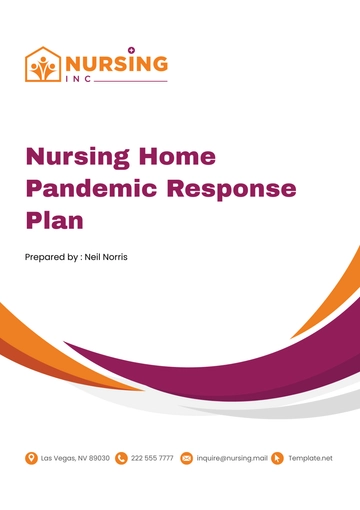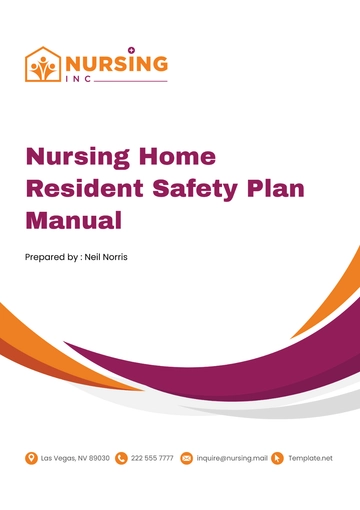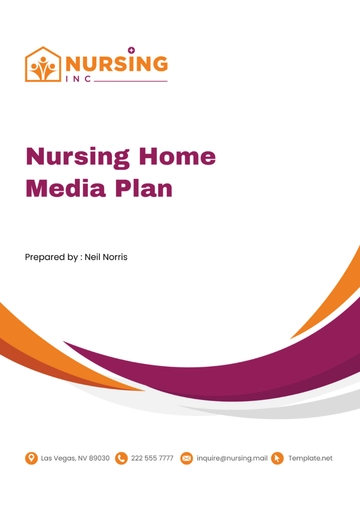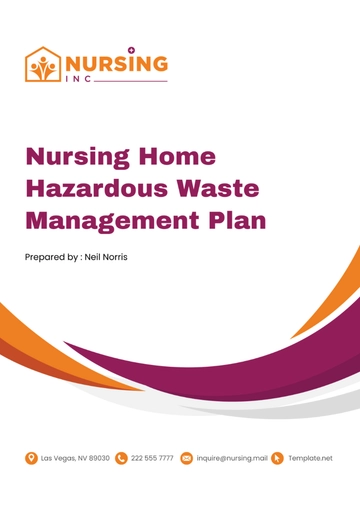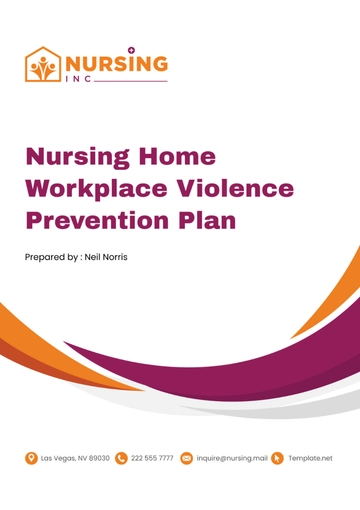Free Nursing Home Asset Management Plan
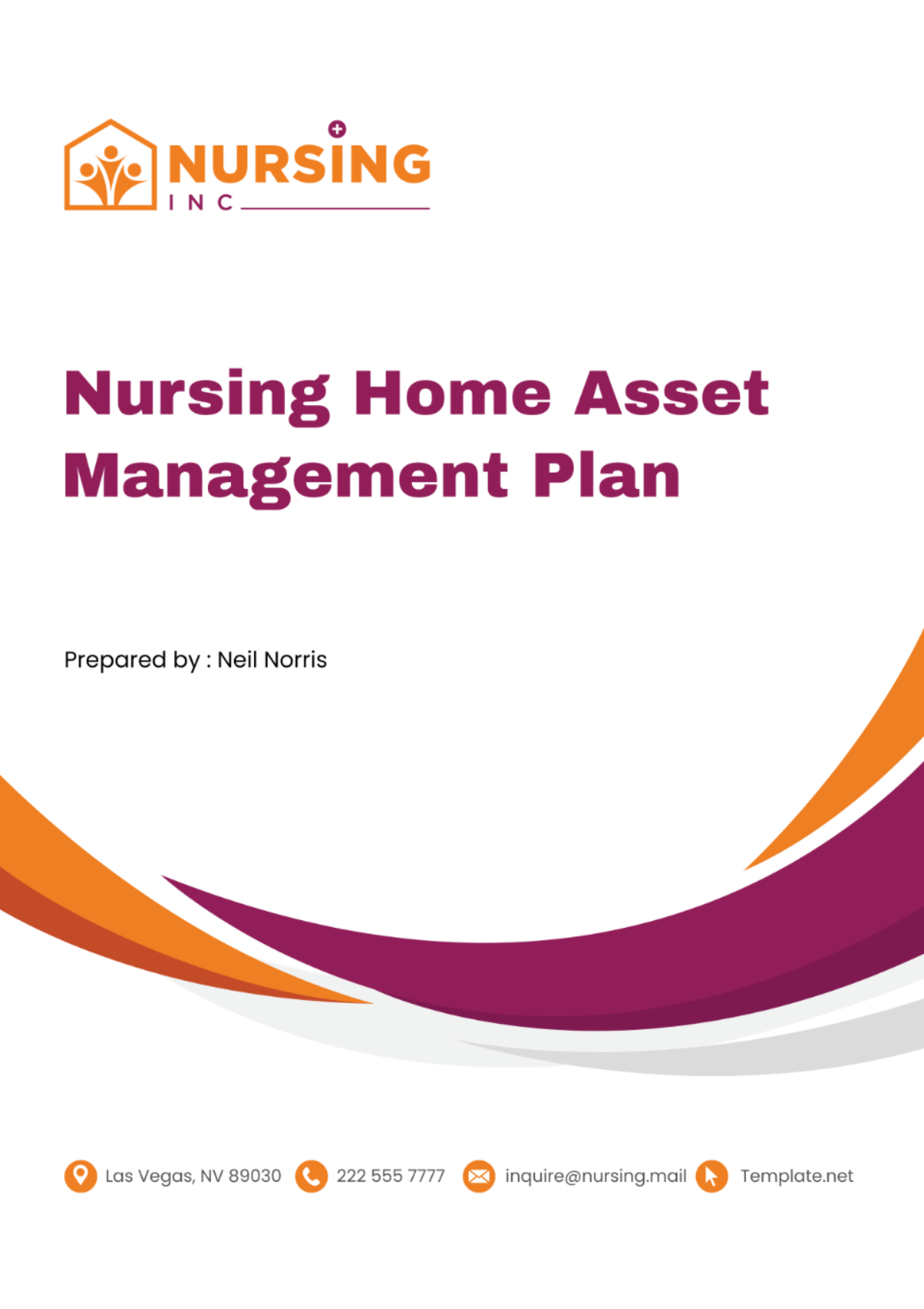
1. Executive Summary
The Asset Management Plan (AMP) at [Your Company Name] is designed to strategically steer investments toward essential assets, ensuring the nursing home's infrastructure is optimally maintained and functional. This detailed plan lays out the objectives, strategies, and specific actions required for the effective and proactive management of infrastructural assets, which are critical to our mission of delivering high-quality care.
Our AMP addresses various critical areas including risk management, life cycle costing, and future-proofing assets against technological obsolescence. By focusing on these strategic elements, [Your Company Name] aims to not only extend the lifespan of its assets but also enhance the quality of services provided to our residents. The plan underscores our commitment to upholding and exceeding industry standards, ensuring that every asset functions as a robust contributor to our overarching goal of excellent resident care and safety.
2. Asset Inventory
A thorough understanding of our current assets is essential for effective management and forward planning. Our Asset Inventory is categorized as follows:
Table 1: Detailed Asset Inventory Overview
Asset Type | Quantity | Current Condition | Replacement Value |
|---|---|---|---|
Real Estate | 2 units | Excellent | $15 million |
Medical Equipment | 150 items | Good | $3 million |
Inventory | 300 items | Good | $200,000 |
Digital Assets | 4 systems | Excellent | $500,000 |
Other | 50 items | Fair | $100,000 |
Our real estate comprises two main facilities, both in excellent condition and valued at $15 million, highlighting their significant role in our operations. The medical equipment, essential for daily medical care, is currently in good condition, representing a substantial investment of $3 million. The general inventory, valued at $200,000, includes medical supplies and daily necessities critical for routine care. Digital assets, increasingly pivotal in today’s healthcare environment, are in excellent condition and are central to our operations, patient management, and security systems. Other assets include furniture and minor equipment essential for daily operations but require attention due to their fair condition.
This structured inventory not only aids in effective asset management but also serves as a foundational tool for financial planning, risk assessment, and strategic investment in new technologies and equipment.
3. Asset Condition Assessment
The condition of our assets is rigorously assessed and classified into one of five categories: excellent, good, fair, poor, or critical. This classification system is crucial for prioritizing where investments and maintenance efforts should be directed to optimize operational efficiency and care quality. Below is a more detailed look at how these assessments influence our management practices:
Excellent: Assets in 'excellent' condition require minimal intervention, allowing for reallocation of resources to areas with greater need.
Good: Assets rated as 'good' receive regular maintenance to prevent deterioration, ensuring their longevity and reliability.
Fair: Assets in 'fair' condition are flagged for enhanced monitoring and more frequent reviews. Plans for refurbishment or replacement are often initiated once assets fall into this category to avoid operational disruptions.
Poor and Critical: Assets in these categories are prioritized for immediate action, whether it be significant repairs or full replacements. These conditions represent a potential risk to both safety and quality of care and thus are addressed with urgency.
The systematic assessment and categorization process allows for a dynamic approach to asset management at [Your Company Name], ensuring that resources are aptly allocated not just for immediate needs, but also strategically invested to mitigate future risks and challenges.
4. Risk Assessment
In the management of assets at [Your Company Name], identifying and mitigating risks is crucial to ensuring the longevity and efficiency of our operational capabilities. We systematically evaluate risks associated with asset deterioration, technological obsolescence, and external threats, such as natural disasters or regulatory changes.
Deterioration and Obsolescence: Regular assessments determine how assets degrade over time under normal usage conditions, and how quickly they become outdated due to technological advancements. For instance, medical equipment may require upgrades to keep pace with new medical practices or to comply with updated health regulations.
External Threats: We also consider external risks including environmental factors, economic shifts, or changes in government policy that could impact our operations. For example, a natural disaster could damage physical assets, requiring substantial repairs or complete replacement, while economic downturns might affect our ability to finance asset updates.
Strategies to mitigate these risks include:
Preventative Maintenance: Scheduled maintenance reduces the risk of asset failure and extends the useful life of equipment.
Upgrades and Replacements: Regularly updating equipment to maintain operational effectiveness and compliance with health standards.
Insurance and Contingency Planning: Adequate insurance coverage and emergency planning ensure financial stability and operational continuity in adverse conditions.
These proactive measures help minimize potential disruptions to our services, safeguarding the well-being of our residents and the functionality of our facilities.
5. Life Cycle Cost Analysis
Effective financial planning and asset management are grounded in our Life Cycle Cost Analysis (LCCA), which estimates the total costs associated with each significant asset from acquisition through disposal. This comprehensive analysis helps us make informed decisions about purchasing, maintaining, and replacing assets.
Table 2: Detailed Life Cycle Cost Analysis
Asset Type | Acquisition Cost | Maintenance Cost/yr | Estimated Lifespan | Total Lifecycle Cost |
|---|---|---|---|---|
Medical Equipment | $800,000 | $50,000 | 10 years | $1.3 million |
Understanding the Costs:
Acquisition Cost: Initial purchase price of the asset.
Maintenance Cost: Annual costs required for upkeep to ensure the asset remains functional and efficient.
Estimated Lifespan: The expected operational period before the asset becomes obsolete or fails.
Total Lifecycle Cost: The overall cost of the asset over its useful life, including unexpected repairs or premature replacement.
LCCA is pivotal for budgeting and strategic planning. It ensures that funds are appropriately allocated for future asset needs, balancing between current operational expenses and long-term investment strategies.
6. Maintenance and Renewal Strategy
Our Maintenance and Renewal Strategy is designed to maintain and enhance the operational performance and condition of our assets. This strategy is crucial for ensuring the continuous delivery of high-quality care and services to our residents.
Components of the Strategy:
Routine Maintenance: Regular checks and servicing to prevent breakdowns and extend the lifespan of assets.
Repairs: Timely interventions to fix or replace parts of assets that have failed or are underperforming.
Renewals and Replacements: Scheduled upgrades and replacements based on the life cycle cost analysis and condition assessments to ensure our facilities remain state-of-the-art.
This strategy not only helps in maintaining the quality and safety of our assets but also optimizes our financial planning by reducing unexpected expenditures.
7. Funding Strategy
Ensuring the availability of funds for asset management is vital for the sustainability of our operations. Our Funding Strategy involves multiple sources to secure financial stability:
Operational Revenues: Funds generated from daily operations are a primary source for routine maintenance and minor upgrades.
Grants: We actively seek grants from governmental bodies and private foundations aimed at improving healthcare infrastructure.
Fundraising Initiatives: Engaging the community through fundraising events and campaigns to support specific projects, such as the acquisition of new medical equipment or the renovation of facilities.
Additionally, strategic financial reserves are set aside to address unforeseen expenses or emergencies, ensuring that financial resources are always available to address the immediate needs without compromising the quality of care provided.
By integrating these elements—Risk Assessment, Life Cycle Cost Analysis, Maintenance and Renewal Strategy, and Funding Strategy—into our Asset Management Plan, [Your Company Name] effectively safeguards its asset base, ensuring optimal operational readiness and the ability to provide superior care and services to our residents. This comprehensive approach allows us to manage our assets wisely, aligning financial resources with our strategic goals and the needs of our community.
8. Implementation Plan
Effective implementation of asset management strategies at [Your Company Name] involves a structured approach to ensure each task is executed with precision and accountability. Our Implementation Plan outlines specific tasks, assigns responsibilities, and sets clear timelines to manage our assets effectively and sustain our high-quality care.
Table 3: Detailed Implementation Timeline
Activity | Responsible Party | Start Date | End Date |
|---|---|---|---|
Equipment Maintenance | Facilities Manager | 01/05/2050 | Ongoing |
Software Upgrade | IT Department | 01/06/2050 | 01/07/2050 |
Key Components of the Implementation Plan include:
Task Definition: Clear descriptions of what each task entails, ensuring all team members understand their objectives.
Role Assignment: Assigning responsibilities to specific departments or individuals to foster accountability.
Timeline Management: Setting realistic start and end dates to ensure timely completion of tasks while allowing flexibility for adjustments as needed.
Resource Allocation: Ensuring that all necessary resources, including manpower, finances, and equipment, are available to execute the tasks effectively.
This structured plan helps streamline processes, minimize disruptions, and enhance operational efficiency, all while maintaining the highest standards of care and compliance.
9. Monitoring and Review
To ensure the Asset Management Plan (AMP) operates effectively and aligns with our operational goals and standards, [Your Company Name] employs robust monitoring and review mechanisms. These are critical for assessing the implementation of the plan and its effectiveness in maintaining and enhancing asset value and operational performance.
Monitoring and review processes include:
Regular Assessments: Scheduled reviews of ongoing tasks against the plan's objectives to ensure alignment and effectiveness.
Performance Metrics: Utilization of specific indicators related to asset health, operational efficiency, and cost management to measure success and identify areas needing improvement.
Stakeholder Feedback: Engaging with staff and residents to gather insights on the practical impacts of asset management practices, fostering a culture of openness and continuous feedback.
Audit and Compliance Checks: Routine audits and checks to ensure compliance with industry standards and regulatory requirements.
These mechanisms not only help in maintaining a high level of asset management but also ensure that the strategies implemented positively impact our service delivery and resident satisfaction.
10. Continuous Improvement
The pursuit of excellence at [Your Company Name] is a continuous process. Every five years, our Asset Management Plan undergoes a formal review and renewal process. This process is not merely procedural but is a strategic effort to integrate new learnings, adapt to technological advancements, and respond to regulatory changes and resident needs.
The continuous improvement process involves:
Review of Outcomes: Analyzing whether the asset management objectives were met and identifying the causes of any discrepancies.
Integration of New Technologies: Evaluating and incorporating new technologies and practices that can enhance asset functionality and operational efficiency.
Regulatory Compliance: Updating the plan to ensure it remains compliant with the latest health and safety regulations.
Feedback Incorporation: Adjusting the plan based on feedback from internal stakeholders and changes in the healthcare landscape.
This iterative process ensures that our Asset Management Plan is not static but evolves to meet the dynamic needs of our operations and the communities we serve, thereby maintaining our commitment to providing top-tier care through optimized asset management.
Through diligent implementation, ongoing monitoring, and a commitment to continuous improvement, [Your Company Name] sustains a high-performance environment that not only meets but exceeds the standards required to deliver superior care to our residents. This approach ensures that our AMP remains robust, relevant, and aligned with our mission to enhance the quality of life for those we serve.
- 100% Customizable, free editor
- Access 1 Million+ Templates, photo’s & graphics
- Download or share as a template
- Click and replace photos, graphics, text, backgrounds
- Resize, crop, AI write & more
- Access advanced editor
Introducing the Nursing Home Asset Management Plan Template on Template.net! This comprehensive and customizable template is designed to help nursing homes effectively manage their assets. With our AI editor tool, easily tailor the plan to your facility's specific needs and requirements. Streamline asset tracking, maintenance, and replacement processes to ensure optimal performance and longevity. Simplify asset management with precision and ease.
You may also like
- Finance Plan
- Construction Plan
- Sales Plan
- Development Plan
- Career Plan
- Budget Plan
- HR Plan
- Education Plan
- Transition Plan
- Work Plan
- Training Plan
- Communication Plan
- Operation Plan
- Health And Safety Plan
- Strategy Plan
- Professional Development Plan
- Advertising Plan
- Risk Management Plan
- Restaurant Plan
- School Plan
- Nursing Home Patient Care Plan
- Nursing Care Plan
- Plan Event
- Startup Plan
- Social Media Plan
- Staffing Plan
- Annual Plan
- Content Plan
- Payment Plan
- Implementation Plan
- Hotel Plan
- Workout Plan
- Accounting Plan
- Campaign Plan
- Essay Plan
- 30 60 90 Day Plan
- Research Plan
- Recruitment Plan
- 90 Day Plan
- Quarterly Plan
- Emergency Plan
- 5 Year Plan
- Gym Plan
- Personal Plan
- IT and Software Plan
- Treatment Plan
- Real Estate Plan
- Law Firm Plan
- Healthcare Plan
- Improvement Plan
- Media Plan
- 5 Year Business Plan
- Learning Plan
- Marketing Campaign Plan
- Travel Agency Plan
- Cleaning Services Plan
- Interior Design Plan
- Performance Plan
- PR Plan
- Birth Plan
- Life Plan
- SEO Plan
- Disaster Recovery Plan
- Continuity Plan
- Launch Plan
- Legal Plan
- Behavior Plan
- Performance Improvement Plan
- Salon Plan
- Security Plan
- Security Management Plan
- Employee Development Plan
- Quality Plan
- Service Improvement Plan
- Growth Plan
- Incident Response Plan
- Basketball Plan
- Emergency Action Plan
- Product Launch Plan
- Spa Plan
- Employee Training Plan
- Data Analysis Plan
- Employee Action Plan
- Territory Plan
- Audit Plan
- Classroom Plan
- Activity Plan
- Parenting Plan
- Care Plan
- Project Execution Plan
- Exercise Plan
- Internship Plan
- Software Development Plan
- Continuous Improvement Plan
- Leave Plan
- 90 Day Sales Plan
- Advertising Agency Plan
- Employee Transition Plan
- Smart Action Plan
- Workplace Safety Plan
- Behavior Change Plan
- Contingency Plan
- Continuity of Operations Plan
- Health Plan
- Quality Control Plan
- Self Plan
- Sports Development Plan
- Change Management Plan
- Ecommerce Plan
- Personal Financial Plan
- Process Improvement Plan
- 30-60-90 Day Sales Plan
- Crisis Management Plan
- Engagement Plan
- Execution Plan
- Pandemic Plan
- Quality Assurance Plan
- Service Continuity Plan
- Agile Project Plan
- Fundraising Plan
- Job Transition Plan
- Asset Maintenance Plan
- Maintenance Plan
- Software Test Plan
- Staff Training and Development Plan
- 3 Year Plan
- Brand Activation Plan
- Release Plan
- Resource Plan
- Risk Mitigation Plan
- Teacher Plan
- 30 60 90 Day Plan for New Manager
- Food Safety Plan
- Food Truck Plan
- Hiring Plan
- Quality Management Plan
- Wellness Plan
- Behavior Intervention Plan
- Bonus Plan
- Investment Plan
- Maternity Leave Plan
- Pandemic Response Plan
- Succession Planning
- Coaching Plan
- Configuration Management Plan
- Remote Work Plan
- Self Care Plan
- Teaching Plan
- 100-Day Plan
- HACCP Plan
- Student Plan
- Sustainability Plan
- 30 60 90 Day Plan for Interview
- Access Plan
- Site Specific Safety Plan
